How To Grow Lettuce
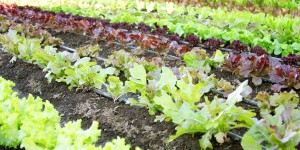 If you want to learn how to grow lettuce, you’re in the right place.
If you want to learn how to grow lettuce, you’re in the right place.
A gardening guide just about how to grow lettuce? You bet!
Learning how to grow lettuce is fun, not too difficult, and rewarding. Lettuce is one of the only vegetables to offer such a wide variety of choices in flavor, texture, and appearance. No other vegetable has as many growing possibilities as lettuce.
There are varieties that don’t go to seed or turn bitter in hot weather, and others that are hardy enough to withstand frost. There are salad greens that you can grow all summer, and others that you can leave in your garden all winter long.
You might have a lot of specific questions such as: “how to grow romaine lettuce?“, “how to grow head lettuce?” or “how to plant lettuce?“. This guide is specifically designed for people who might have this kind of questions.
Salad greens are lovely as borders or in garden beds. With a bit of care, you can grow them in pots on your porch or patio, in window boxes inside or outside your apartment, or in containers indoors. You can even grow lettuce in the cellar; they are very adaptable plants. Home grown greens are good for your health, and they won’t lose their nutrition value by being shipped long distances to get to your plate. They arrive crisp, fresh, and chock full of vitamins and minerals. They tend to be disease resistant and are not particularly fussy about the soil they are grown in.
This guide is everything you need to know about how to grow lettuce. First, I discuss a number of varieties of lettuce to get you acquainted. After that is a section about how to grow lettuce during the summer and year round in your garden. Next I discuss the diseases and pests you will need to know about to grow lettuce in your garden, and how to prevent and eradicated them. Then I will talk about how to grow lettuce indoors and in containers, and have a short section about other salad greens you can grow. Let’s get started!
1. Varieties of Lettuce
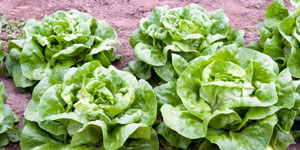 One of the things that can be most interesting when you are first learning how to grow lettuce is the number of varieties available to the gardener. They have different attributes, and so different measures should be taken when you are learning how to grow lettuce from one of the countless varieties available. It would be too much to try to list all the varieties of lettuce; instead I will tell you about a few popular ones. These are hardy varieties that are good to start with when you first learn how to grow lettuce. To simplify matters, I have divided the categories of lettuce in two main varieties: head and loose leaf. Romaine lettuce is occasionally given its own variety as it grows into an upright stalk, but it is also a crisp head type, so it is included in that category here.
One of the things that can be most interesting when you are first learning how to grow lettuce is the number of varieties available to the gardener. They have different attributes, and so different measures should be taken when you are learning how to grow lettuce from one of the countless varieties available. It would be too much to try to list all the varieties of lettuce; instead I will tell you about a few popular ones. These are hardy varieties that are good to start with when you first learn how to grow lettuce. To simplify matters, I have divided the categories of lettuce in two main varieties: head and loose leaf. Romaine lettuce is occasionally given its own variety as it grows into an upright stalk, but it is also a crisp head type, so it is included in that category here.
1a. Head Lettuce
There are two kinds of head lettuce: crisp head and butter head. Crisp head lettuce has a firm, tightly folded head, a brittle texture, and a mild, sweet taste. Butter head makes a smaller, loosely folded head with a soft texture and a sweet, buttery taste.
Crisp head varietal
- Hot weather (82 days to maturity): Does not go bitter in hot weather.
- Great Lakes (90 days to maturity): Forms heads even in hot weather.
- Ballerina (80 days to maturity): Compact heads; resistant to tip burn.
- Valmaine Romaine (75 days to maturity): Resistant to mildew and mosaic. Hearts blanch nearly white.
- Midget Romaine (70 days to maturity): Grows five inches tall. Very slow to bolt.
- Evergreen (95 days to maturity): Dark green, tall leaves. Excellent late fall crop.
- Arctic King (80 days to maturity): Light green, short leaves. Very hardy; can over winter in cold frame.
Butter head varietal
- Fordhook (78 days to maturity): Glossy dark green outer leaves, with creamy yellow hearts.
- Butter King (70 days to maturity): Largest of the butter heads. Very disease resistant.
- Summer Bibb (70 days to maturity): Compact round heads and small dark green leaves. Heat resistant.
- Tom Thumb (65 days to maturity): Similar to Bibb but smaller. Delicate and delicious.
- Matchless (80 days to maturity): Somewhat bland, but good for most climates. Does best in cool weather.
- Dark Green Boston (80 days to maturity): Mosaic resistant, cool-weather lettuce.
- Big Boston (75 days to maturity): Broad, smooth leaves. Cool weather lettuce.
1b. Loose Leaf Lettuce
Loose leaf lettuce does not form tightly compact heads, and has the well-deserved reputation of being the easiest kind of lettuce to grow. It is the most popular kind among home gardeners, and is a great kind to learn how to grow lettuce with when you are first starting out. Loose leaf lettuce matures faster than head lettuce, making it great for growing several bumper crops through the growing season. You can also eat off of one plant for the growing season by not harvesting the whole plant all at once, but instead treating it like a leafy herb, removing a few leaves at a time. Loose leaf lettuce tends to have all kinds of different leaves – frilly, crumpled, flat, and deeply lobed. Loose leaf lettuce is also known to have higher nutrient quantities than head varieties. It can be a bit milder in flavor than head lettuce, but this can be remedied simply by combining it with other types of lettuce and salad greens in tossed salads.
- Slobolt (45 days to maturity): Light green, frilled leaves.
- Oakleaf (45 days to maturity): Oak shaped leaves form a rather loose head. Can be grown over the winter; very cold hardy
- Salad Bowl (45 days to maturity): Bright green leaves spread over 1.5 feet. Slow to bolt, frost resistant.
- Green Ice (45 days to maturity): Crisp, dark green leaves are slow to bolt.
- Ruby (45 days to maturity): Bright green leaves with red tips. Insect resistant.
- Prizehead (45 days to maturity): Curled green leaves are shaded a brownish red.
- Grand Rapids (45 days to maturity): Light green, frilled leaves. Good cool-weather lettuce. Tip burn resistant.
2. How To Grow Lettuce
2a. How To Grow Lettuce In Summer
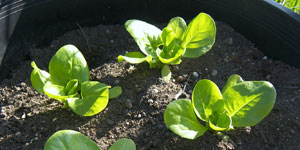 There are several important things to consider when you are learning how to grow lettuce outdoors in the summer. Lettuce can be grown next to any other vegetables. If you want a method of how to grow lettuce that will help repel bugs, plant it with companions like chives, onions, radishes, garlic, and herbs. Carrots planted next to lettuce will help give it some protection from direct summer sunlight. If you have the room, a great method for how to grow lettuce is to plant a small kitchen garden near your back door. Then you can grow your lettuce and other greens along with the herbs you use in salads and cooking. If you wish to implement a more extravagant method of how to grow lettuce, you can make a raised bed with redwood boards nailed to posts. This makes a handsome salad garden.
There are several important things to consider when you are learning how to grow lettuce outdoors in the summer. Lettuce can be grown next to any other vegetables. If you want a method of how to grow lettuce that will help repel bugs, plant it with companions like chives, onions, radishes, garlic, and herbs. Carrots planted next to lettuce will help give it some protection from direct summer sunlight. If you have the room, a great method for how to grow lettuce is to plant a small kitchen garden near your back door. Then you can grow your lettuce and other greens along with the herbs you use in salads and cooking. If you wish to implement a more extravagant method of how to grow lettuce, you can make a raised bed with redwood boards nailed to posts. This makes a handsome salad garden.
The size of your lettuce patch of course is dependent upon your particular needs. I grow my lettuce in a 3 by 10 foot area, which is large enough to keep a family of several salad lovers happy, with a bit of extra lettuce to give away. If you are short on space, you can tuck lettuce between rows of vegetables that ripen more slowly, as well as in other spots in your vegetable and flower gardens.
Soil for lettuce should be well drained, and dug deep – up to two feet – and kept loose and moist. If your soil is hard and claylike, till some sand and humus or peat moss into it. It is a good idea to give your soil a dose of nutrients before you plant, because lettuce is a fast grower and needs its food in the ground to begin with. Vegetables such as beans will give your soil the nitrogen that lettuce needs to thrive on. Blood meal, bone meal, materials derived from seaweed, and fish emulsions are also great. Follow the directions on the package for the amounts to use and don’t worry if you add too much; one of the advantages of using organic fertilizer is that they break down slowly and will not burn the plants. If you use raw manure or organic compost, be sure to till it deeply into the soil. Midseason, it is useful to give the soil a boost with blood meal or whatever other organic fertilizer you have on hand. The lettuce plants will grow with rejuvenated vigor and the seedlings of your bumper crop will be off to a good start.
Lettuce does best in a slightly basic soil. You can find out your soil’s pH by sending a sample of it to your local agricultural laboratory, or you can test it yourself. Simple home testing kits are available at most home and garden centers. A pH of 7 is neutral. Any number below 7 is acidic; any number above 7 is basic.
If your soil tests from 6.5 to 7.5 on the pH scale, you are within the normal limits for growing lettuce and most other salad greens. If you find that your salad is too acidic, add crushed limestone, dolomite, or wood ash to it. If your soil is very basic, add peat moss, pine needles, or oak leaves.
Lettuce is a hardy, cold season vegetable, and so it is one of the first you can plant. You can plant it as early as four to six weeks before the last frost, or as soon as the ground is workable, as the seed packet instructs you. If you have mulch on your garden from the previous fall, the ground should be workable as soon as you pull the mulch back. If your garden is not mulched, your soil will be workable when a handful of it crumbles apart when you squeeze it. Rake or till the soil to a depth of at least six inches, and sow the seeds as instructed on the packet.
In zones 6 and higher, you can plant loose leaf and butter head lettuce varieties around the middle to end of March, weather permitting, in the garden. Crisp head lettuce takes from sixty to eighty days to mature and does not do well in very hot weather. Therefore crisp head lettuce should be started indoors four to six weeks before the ground is workable – as early as mid-February – and transplanted to the garden in the middle to end of March. Before transplanting young plants into the garden, they have to be hardened off for about two weeks. This means getting them used to the outdoor weather A cold frame is an ideal way to garden off plants. If you do not have a cold frame, however, you can put your plants outdoors for a few hours a day. While you are hardening off, cut down the amount of water you are giving them by half. On the day you transplant them, water them well with a liquid fertilizer such as seaweed or fish emulsion to give them a good start.
If you do not want to start crisp head lettuce indoors, you can plant it directly in the cold frame four to six weeks before transplanting it into the garden. Butter head lettuce may also be started indoors or in a cold frame. You can do the same with loose leaf lettuce, but this is not entirely necessary as it matures rapidly.
Lettuce can, and should, be planted in midsummer for a late fall crop. In areas where spring is long and cool, crisp head lettuce can be sown directly into the garden along with loose leaf and butter head varieties. If you are planting your lettuce in a garden plot with other vegetables, plant the lettuce at the north side of the plot in northern hemispheres. Lettuce will need a bit of shade in the hot summer months, which tomatoes and peppers can provide if they are planted on the south side of the lettuce.
Lettuce is easy to transplant. It should not be transplanted on hot, sunny days. Hold the seedling by its leaves and dig it up, keeping the root ball attached to its roots. Make a hole in the soil and plant the seedling deep enough so that the first leaves rest on the surface of the soil. Press the soil around the seedling, making sure there are no depressions left in the soil that could hold water and cause the seedling to rot. Water the seedling, and put down mulch around it.
You can retard the growth of a seedling by shaking off all the soil from its roots. Doing this removes the tiny feeder roots from the main ones, and will set back the growth of the seedling by as much as two weeks. This is a good method for controlling the growth rate of the plants in order to stagger the number of mature plants in your lettuce patch. Be sure to plant the seedling quickly so the roots do not dry out.
By July, our lettuce will need some shade to keep it from bolting: growing a thick flower stalk, turning bitter, and going to seed. Even the most heat-hardy varieties need some protection from summer sun. One way to make shade easily is to use thin, 3-foot bamboo poles and cheesecloth. Push the poles into the ground around the lettuce patch and down the middle, keeping them about three feet apart. Then drape a single layer of cheesecloth over them and secure it to the poles with zip-ties or string. If you do not have cheesecloth, a lightweight white cotton sheet will do fine. In the northern hemisphere, you will need to shade your lettuce on the south side. Be sure you are not shading out sun-tolerant plants.
2b. How To Grow Lettuce Year Round
Because lettuce is a hardy cold-season crop, it is not very difficult to learn how to grow lettuce year round, depending where you live. If you are determined to grow lettuce up to and even after the first real killing frost, be sure to choose varieties that take no longer to mature than the time left before the first hard frost in your area. Gardeners in extreme northern climates may have a month or two – usually January and February – when temperatures are below freezing for too many consecutive days for truly growing lettuce year round, but they can still find ways of how to grow lettuce deep into the winter.
If you have a greenhouse or good, tight-fitting cold frames made of glass or very heavy duty plastic, you can grow excellent loose leaf and butter head lettuce all winter long. Lettuce and other salad greens are superb crops for greenhouses and cold frames because they grow fast and produce large yields in relatively small spaces. Their basic needs are good distribution of moisture through the soil, a humid atmosphere, and cool temperatures. Sow the seeds thinly on top of the soil. Press the seeds into the soil, water them with a fine spray, and cover with a newspaper until they germinate. When the seedlings come up, remove the newspaper. Thin the seedlings to eight to ten inches apart. Be sure to keep the plants well watered and fertilize them every two weeks.
The best time to make the first planting for year round growing in a greenhouse or cold frame is at the end of August. Then make successive plantings every three weeks until it is time to plant lettuce and other salad greens in the garden again – in other words, spring.
3. Disease, Insects, and Pests
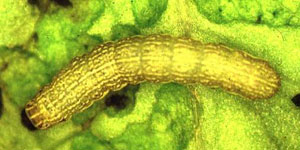 There are a number of problems that can attack lettuce, including diseases, insects, and animals. Lettuce is delicious, nutrient rich, and easily accessible when it is not protected, so it is highly sought after by garden pests. Because of this, when you learn how to grow lettuce you will also need to learn how to protect lettuce. In this section I will cover each kind of problem in turn, along with ways to remedy them. Don’t be too worried: lettuce is a hardy plant. If your soil is health and rich in humus and minerals, you can learn how to grow lettuce that is robust and resistant to disease and insects.
There are a number of problems that can attack lettuce, including diseases, insects, and animals. Lettuce is delicious, nutrient rich, and easily accessible when it is not protected, so it is highly sought after by garden pests. Because of this, when you learn how to grow lettuce you will also need to learn how to protect lettuce. In this section I will cover each kind of problem in turn, along with ways to remedy them. Don’t be too worried: lettuce is a hardy plant. If your soil is health and rich in humus and minerals, you can learn how to grow lettuce that is robust and resistant to disease and insects.
3a. Diseases
Tip burn is one of the most common problems associated with lettuce. The name of the disease describes what it is. The tips of the leaves turn yellow, then brown, and the leaves die. Tip burn is caused by lettuce plants losing water during hot, dry weather. To remedy it, keep the grown moist and mulch the plants generously. Plant varieties that withstand tip burn, such as Great Lakes, Grand Rapids, and Ballerina.
Mosaic or Yellow Leaf deforms and mottles the lettuce leaves. As the disease advances, the leaves turn yellow and the plants become stunted and eventually die. Mosaic is a virus spread by aphuds and leafhoppers, and sometimes by ants as well. The best defense is to plant varieties that are tolerant of mosaic, such as Valmaine Romaine, Midget Romaine, or Dark Green Boston. Remove affected plants and dispose of them. Be sure to remove weeds around the lettuce patch, especially wild aster, dandelion, wild chicory, and wild carrot. Destroy aphids and leafhoppers as well as their nests (see Insects section below).
Mildew is a fatal disease caused by a fungus. Mildew produces light yellow and light green spots on mature lettuce leaves, and then the leaves turn white and moldy and the plant dies. Plant resistant varieties, such a Valmaine Romaine, and destroy and dispose of diseased plants to prevent mildew from spreading.
Bottom Rot is a disease that causes the bottom leaves of lettuce plants to turn reddish brown and slimy. It is a disease caused by long spells of wet weather, and will typically go away when the weather dries up. Make sure your soil is well drained and you are not over watering it. Plant upright romaine varieties that are resistant to bottom rot.
3b. Insects
Aphids are tiny white or yellowish green insects found on the undersides of leaves, where they suck the moisture out of the leaves, causing them to curl, and eventually killing the plant. To prevent aphids from infesting your garden, make sure your soil is healthy, free of weeds, and well mulched. Pick off any leaves infested by aphids and destroy them, or wash aphids off with mildly soapy water. Spray plants at least once a week with a mixture of soapy water. And introduce ladybugs and praying mantises to watch over your garden. Both of these beneficial insects love to eat aphids, and will keep your garden free of them. See earlier guides about Organic Gardening and Vegetable Gardening for a more in depth discussion on beneficial insects. You can plant chives, garlic, marigolds, and other flowers that have strong aromas around your garden to deter aphids. See the same earlier guides for more about companion planting to repel insects.
Leafhoppers are tiny, wedge shaped insects that are usually green in color. They can jump incredible distances – hence the name – and are also excellent flyers. Like aphids, the suck the moisture out of plants from the underside of leaves, causing the leaves to curl and the tips to turn brown. Destroy the leafhoppers’ nests before they emerge in the spring. You can recognize their nests as they are globs of spit-like foam which appear on plant stalks in the spring. You can also attract birds that eat leafhoppers, such as flycatchers, phoebes, warblers, and gnatcatchers, by planting marigolds, California poppies, and sunflowers.
Cutworms are soft little worms that are usually found just beneath the surface of the soil. When you disturb them, they curl up tightly. They come in colors of gray, white, light brown, black, and grayish green. Their damage to young plants can be devastating, as they spend their nights chewing plants off at their bases. They hide under the soil during the day. The simplest and best control for cutworks is to put a cardboard or paper collar around the young plants. Make the collar three inches high and an inch and a half in diameter. Set the collar one inch deep into the ground. You can also cut off both ends of a milk carton and set that into the ground. Keep your garden free of weeds so the cutwork will not have a place to lay its eggs. You can plant onions among your lettuce and other plants to deter cutworms.
Cabbage worms are large, pale green worms that eat huge holes in lettuce leaves, destroying the plant if left alone. When you see them, pick them off of the leaves. Sprinkle wood ash around the plants to deter them, and sprinkle diatomaceous earth every morning until they disappear. You can purchase trichogramma wasps and release them in the garden as well. These wasps are harmless to plants and people, but are parasitic to cabbage worms.
3c. Animals
Rabbits will consider lettuce, salad greens, and a number of other vegetables as being there solely for their benefit. To deter them, enclose your garden with a chicken-wire fence at least two feet high. Make long wire cages out of chicken wire to fit over lettuce and other crops rabbits like to eat. Intercrop with onions, and sprinkle blood meal around the plants.
Gophers can tunnel into your garden and devastate it in a short period of time. Once they have established a tunnel system, it can be a major undertaking to get them out. There are specially made gopher traps that can be placed at the outlets to their burrows, provided you can find them all. They can also be flooded out of their burrows.
Cats and dogs can present a problem if their owners have not trained them well. Fences don’t particularly bother cats, and both dogs and cats can dig up a garden, and keep returning once they have found a favorite spot. If you know where they are coming from, you have to have a friendly chat with your neighbor. Otherwise, high chicken wire fences can help keep them out. Or plant pungent vegetables like garlic, chives, and onions, and spray the garden with organic cat repellent. You can also lure cats away from the garden by planting catnip elsewhere on the property.
4. Alternatives to the Garden
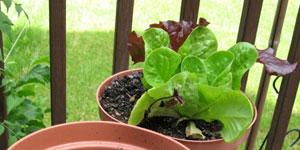 You certainly do not have to limit yourself to a garden bed when you first start to learn how to grow lettuce. Lettuce is a hardy plant, and will adapt to a number of different growing conditions. You can also learn how to grow lettuce indoors or in containers, which you can locate close enough to your kitchen that you can have salads with extremely fresh lettuce that is bursting with color and flavor.
You certainly do not have to limit yourself to a garden bed when you first start to learn how to grow lettuce. Lettuce is a hardy plant, and will adapt to a number of different growing conditions. You can also learn how to grow lettuce indoors or in containers, which you can locate close enough to your kitchen that you can have salads with extremely fresh lettuce that is bursting with color and flavor.
4a. How To Grow Lettuce Indoors
Whether you decide to grow just one tomato plant, or just enough lettuce for a few salads, or turn every available inch of space into an indoor farm, it will be well worth your while. Indoor farming can be great for apartment dwellers, mobile home owners, and senior citizens how want a hobby that is as healthy as it is fun. What’s more, you can grow lettuce and other vegetables indoors year round, as you are the one who controls light, temperature, and moisture to suit the needs of your plants.
If you have south-facing windows that receive at least six to eight hours of sun a day, then you can use natural light for your plants. Be careful, though, of the strength of hot summer sun, and protect your lettuce with blinds or thin curtains that filter the light. Window greenhouses can be a terrific addition for growing lettuce indoors. Balcony and terraces can be used to grow leafy greens all winter in a simply constructed hot bed. Use a small wooden box about eight inches deep and install an inexpensive heating cable in the bottom, Cover with soil, and plant your lettuce. Cover the box with a cold frame made of heavy plastic nailed to a wooden frame. During the coldest weather, further insulate the box with an old blanket, or move the box indoors.
If you do not have enough natural light or need to supplement it, a simple fluorescent light will do the trick. More expensive grow lights are available for the very serious gardener, but when you first learn how to grow lettuce they are not necessary. A standard reflector with a warm white 40-watt bulb is fine. If you want to use something a little more fancy without investing too much money, buy a dual spectrum or full spectrum fluorescent bulb. High-pressure sodium and metal halide lamps are also available, but they are typically not necessary for growing simple greens like lettuce.
Leafy vegetables thrive in temperatures from fifty to sixty eight degrees Fahrenheit. Fruiting vegetables do best in temperatures from sixty to eighty degrees Fahrenheit. If you have a basement or back porch that is slightly cooler than the rest of the house during the winter, grow your lettuce there. You can raise the humidity by misting your plants on a daily basis. In the next section I will discuss containers and soil for growing lettuce indoors.
4b. How To Grow Lettuce In Containers
Containers come in all shapes, sizes, and materials, both decorative and plain. Some of the best for gardening are porous clay, terra cotta, and wood ones. Plastic and aluminum will do if you punch holes in their sides at the bottom. Good drainage is very important for containers, and they should never sit in water. Provide frames or saucers filled with small pebbles to catch water overflow. Make sure that whatever size or type of container you choose, it is at least eight inches deep.
Growing plants in containers – particularly leafy vegetables – requires a bit more care and attention than growing them in garden beds. You must make sure that the soil does not dry out, and you have to protect the plants from the hot sun. One of the advantages of container gardening is that you can move the containers into the shade during the hottest part of the day. Large containers can be mounted on wheels to roll them around.
It is best to use a potting mix for your containers. I recommend mixing two parts of mulched or composted garden mix or peat moss to one part soil. These mixes are lighter and will make sure the soil remains well drained. A waterlogged container can lead to root rot, mildew, and bottom rot. You must be careful to water the container sufficiently, though, because containers tend to dry out more quickly than garden beds. It is wise to mulch the container once the plants are established in order to prevent the soil from drying out to quickly.
Use organic fertilizers such as liquid seaweed, liquid fish emulsion, blood meal, bone meal, or vegetable meals. If you use dry fertilizers, mix them into the water you are using to water your containers with. When the greens are first coming up, it is best to water them with a misting spray bottle at least once a day. This will keep the soil moist but not waterlogged, and will avoid compacting the soil.
Lettuce and other leafy greens grown in containers should be harvested before they are fully mature, as they will not have enough space to reach their full height unless enough space is provided. If you want to harvest a mature head of lettuce, grow it alone in a six-inch pot. Long window boxes filled with lettuce, spinach, or a combination of greens can be handsome additions to the home. Cherry or patio tomatoes grown in a large container with several loose leaf lettuce varieties can also be quite attractive.
For more on container gardening, refer to the comprehensive guide on container gardening that I posted earlier.
5. Salad, Greens and Herbs
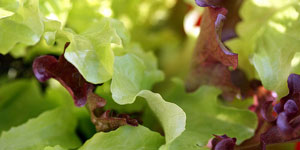 A great way to enhance your salad garden is by growing salad greens and herbs in tandem with your lettuce. Herbs will need at least six hours of full sunlight or fourteen hours of artificial light. Soil for herbs should be healthy and rich, as the plants will use up the nutrients in the soil quickly. The temperature should range from seventy degrees Fahrenheit during the day to sixty degrees at night. Herbs dislike drafts. During cold weather it is a good idea to stretch pieces of plastic across windows to protect plants if you are growing them indoors. Use cold frames for herbs you are growing outdoors when it gets cold, or dig up and transplant herbs to pots to bring them inside.
A great way to enhance your salad garden is by growing salad greens and herbs in tandem with your lettuce. Herbs will need at least six hours of full sunlight or fourteen hours of artificial light. Soil for herbs should be healthy and rich, as the plants will use up the nutrients in the soil quickly. The temperature should range from seventy degrees Fahrenheit during the day to sixty degrees at night. Herbs dislike drafts. During cold weather it is a good idea to stretch pieces of plastic across windows to protect plants if you are growing them indoors. Use cold frames for herbs you are growing outdoors when it gets cold, or dig up and transplant herbs to pots to bring them inside.
When watering herbs, water from the top when the soil is dry to the touch, but don’t let them stand in water, as it will become stagnant and rot their roots. If you do bring herbs in from your garden, choose smaller plants, as they will do better indoors than the larger ones. Keep herbs bushy by pruning off the tops continually to keep them from flowering. If your herbs are allowed to flower, their foliage will become bitter, and they will eventually drop seeds. Most herbs do not flourish between November and January, as they prefer to rest during these months. Just keep snipping away at their tops and they will reward your efforts by putting out new green shoots in late January.
The best time to start herbs from seed is in the early fall for a winter harvest. Pots for herbs should be about six inches across and at least eight inches deep.
Herbs that are fairly easy for a beginner to grow include basil, chives, dill, parsley, tarragon, thyme, and watercress. These can all be planted from seed, although most are available as seedlings at garden centers in the spring.
A number of flowers are lovely additions to salads as well. Calendula, nasturtium, and violets can all be grown in window boxes. They will brighten your indoor garden, and their flowers can be picked throughout the growing season. They should be added sparingly to salads, as they have a strong flavor, but add color to the salad.
Salad greens are all the other leafy vegetables that can add extra zest, flavor, and texture to salads, either by themselves or tossed in with lettuce. Salads composed entirely of lettuce are quite enjoyable as well, but the addition of various textures can make them much more interesting. The beginning gardener should consider starting with celery, fennel, kale, mesclun, and spinach. Each of these greens has a lovely flavor and/or texture and they are all fairly simple to grow. They are hardy – kale can even overwinter outdoors if winters are not terribly cold – and can be started from seed in pots or outdoors.
6. Final Word
 I hope this guide has proved to be informative and fun. Learning how to grow lettuce can be a wonderful experience. There is nothing quite like enjoying a crisp, fresh salad made of greens and vegetables you picked earlier that day from your own garden. I consider sharing a salad I have brought from seed to table with my friends to be a wonderful gift for all of us. I hope you will too.
I hope this guide has proved to be informative and fun. Learning how to grow lettuce can be a wonderful experience. There is nothing quite like enjoying a crisp, fresh salad made of greens and vegetables you picked earlier that day from your own garden. I consider sharing a salad I have brought from seed to table with my friends to be a wonderful gift for all of us. I hope you will too.
Now that you know everything about how to grow lettuce, you just have to get started!

